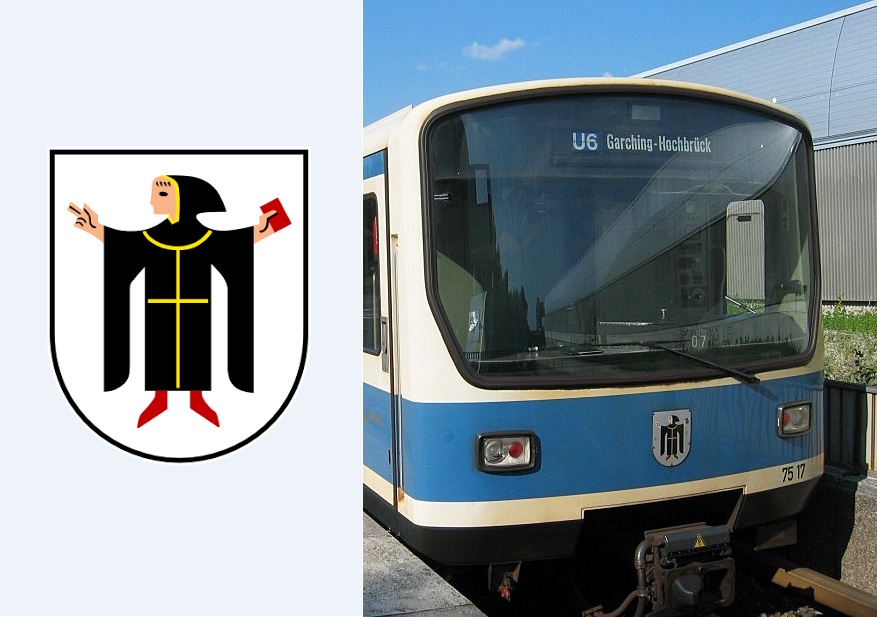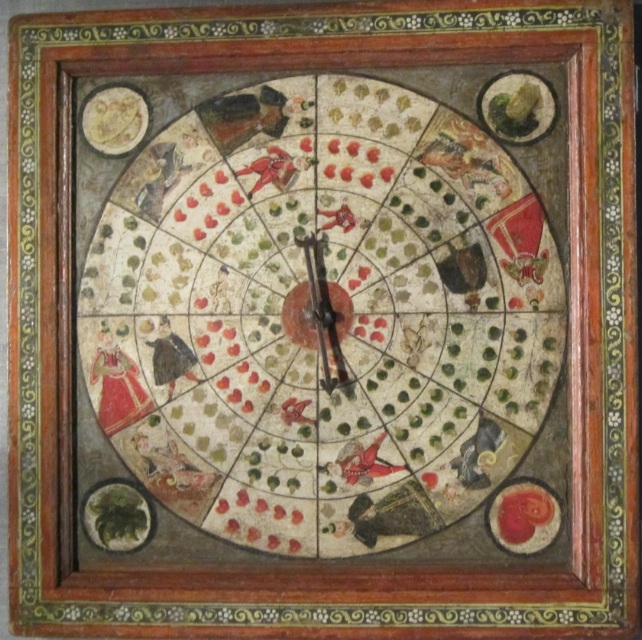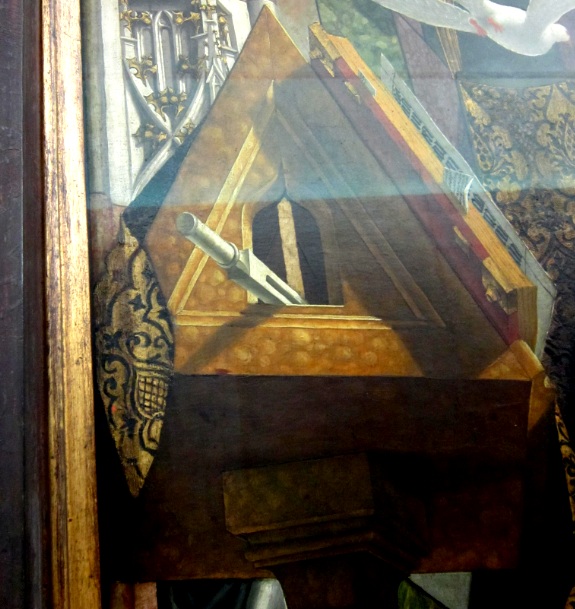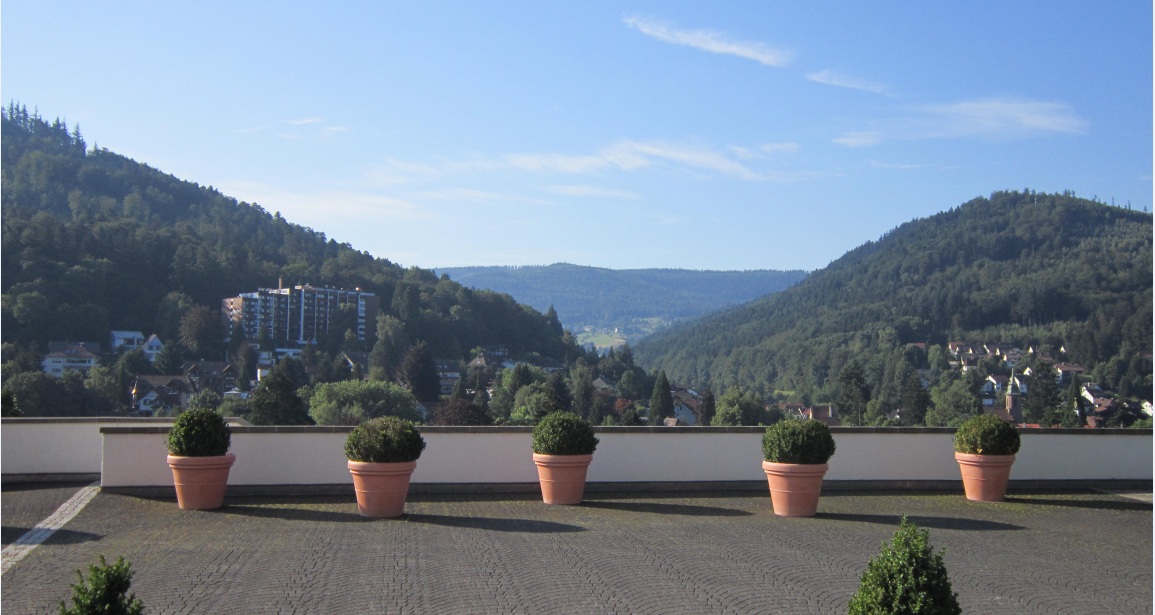In case some of you were not aware, shoemaking is actually not my livelihood. In fact, my primary breadwinning is far less interesting to the general public, although it does sometimes afford me some liberties. In this case, I was traveling to Germany for work (Munich specifically), and since it was my first time in Germany, I decided to arrive a bit early and see the sights, visit a few museums, and sample the local cuisine. I understand that this is not, strictly speaking, related to shoemaking, but if you bear with me and be patient, I can promise you shoemaking insight of the kind of that has opened my eyes and made me a believer! To start, here is what is on the front of most subway cars in the Munich U-Bahn: a fellow in medieval clothes going along for the ride. This is apparently Munich’s “mascot,” the Munchner Kindl. He appears on Munich’s coat of arms, as well as obscure places like manhole covers, and the front of U-Bahn trains. =)
I traveled to Munich a few days before work needed me, and took the time to visit three different museums: the Bayerisches Nationalmuseum, the Munich Residenz, and the Alte Pinakothek.
I enjoyed all three, and each produced some interesting pictures and revealed all manner of insights. In many ways, getting the opportunity to delve into historic works of art and gain this historical knowledge of material culture is, in some ways, more appealing than the appreciation of the piece as a greater whole. I admit to some guilt in this, as it feels sometimes as if I’m simply using the art to further my own modern agenda rather than appreciating it for the beauty of the work. Now, I certainly do admire the talent, skill, and inspiration needed and required to produce such works (not to mention its beauty and splendor), but nothing makes me happier than to see some odd little tidbit that I can incorporate into my re-enactments, or finding some image of a shoe or boot documenting a particular construction method or practice. For example – who knew that wearing a banana hammock was such a sign of an evil-doer? It seemed like every single time I saw this unusual side tying “bikini” (always shown in very dark colors), they were either being crucified or in hell being tortured. Odd, since plenty of evildoers are shown in linen. Image on the left by Michael Pacher, c. 1435-1498, Der Kirchenvateraktar, and the second by Hans Fries, c. 1465-1518, Teile Einer Darstellung Eines Jungsten Gerichtes, from the Alte Pinakothek.
Every now and then, you also get some odd pictures of seam closures and construction of clothes also. One of the difficulties, of course, with period paintings is that if they tend to be allegorical or depict historical events (like the Crucifixion), then one needs must take any details contained in the work with a couple of grains of salt. This is especially true when they are shown wearing rather fantastic clothes that do not quite seem to match the style of the period. For example, take the example of the button loops on this soldier’s doublet sleeves. Though tempting to use as documentary evidence, without a bit more thorough research, I would be reluctant to point to it as such on its own. I did happen to notice a later image, probably early 16th century, showing button loops for a doublet, but they are structured rather differently. Jan Polack, c. 1492, Altarflugel mit Passionsszenen, and Hans Baldung, c. 1484 – September 1545, Christoph I, Markgraf von Baden. Both from the Alte Pinakothek.
This is an interesting piece – both the “bar-grill” and the padding and lining of this 16th century suit of armor. Quilted silk with buttonholes, likely a mechanism for tightening the fit at the top of the head. Though not an area that I have much research on, personal communications indicate that this structure of the top of the helm lining is consistent with other extant helm liners. Armor at the Bayeriches Nationalmuseum, dated 1524.
This looks like a totally fun game. Called “Zeiger-roulette” (translating to “Pointer-roulette”), this board seems to have been created around 1580, and currently housed in the Bayerisches Nationalmuseum. I’ll have to do a bit of digging on this game, but it seems to have all 52 cards of a French-Suited deck represented (aces in the four corners). Likely, players would bet on a particular card (or a set of cards) and the wheel is spun to determine the winners.
There were some incredibly neat reliquaries as well – some had little bits of fabric or material (this one has some linen supposedly from the tablecloth of the Last Supper), some have the hands of various saints, finger bones, etc. If I recall, one even had the hand of St. John the Baptist – likely, there are quite a few authentic “hands of St. John the Baptist” out there. =) This piece was in the reliquary area at the Munich Residenz, and was dated to the late 16th or early 17th century, if I recall.
And, of course, fantastic jewelry! The crown on the left, dated to the 14th century if I recall, is pretty fabulous, but the one next to it (a bit earlier, I believe) is even more fabulous. Kind of wish I had written down all the provenance, but you can always go to the Treasure room in the Munich Residenz and see it yourself.
This is a super neat thing – what exactly is it? It looks a bit like a wooden tuning fork, but it’s rather large. My first guess is that it was used to hold pages of the book in place, but I’m certainly open to other ideas. You might understand my interest for this kind of thing if you saw my section on Replicating a 15th/16th C. Lectern. This comes from a painting by Michael Pacher, c. 1435-1498, Der Kirchenvateraktar in the Alte Pinakothek.
All right, I suppose I should finally give you some shoe-related material Take a look for some interesting pieces. First, this particular pair of strappy 14th century shoes is quite schmancy – Auferweckung der Drusiana, 1380/1390, housed in the Bayerisches Nationalmuseum.
I particularly like the pair that shows the alum tawed portion of the upper, which was becoming very common and popular at the beginning of the 16th century. I made a pair a while back using a technique that I wasn’t too pleased with, but now I know so much more! Looks like it’s pretty butch alum tawed calf. Painting by Marx Reichlich, 1460-1520, in the Alte Pinakothek.
There was a great deal of other grerat material, but these were the highlights from the historic perspective. I should include one other shots, and that is a picture of the view out of the lobby of a hotel that I stayed at In the Black Forest. Absolutely beautiful, and the ham was delicious also =)











Good for you.. opportunity for documentation taken !!!
I go to Germany every few years. .cultural vacations. .immerse myself into old towns,history and of
course the exhibits !! Bring home tons of photos, brochures, postcards etc.just like you,not just in ones chosen field of recreation, but the other details.. .For us SCAdians the internet is a treasuse trove, but having the chance to see the real things is priceless. . if you do not count the flight over. ..
Reg. the lectern: I saw several at my last visit. .in churches ( huge, for the huge books for all to see the
notes for chanting), in mus., some twosided, others three or foursided, with storage below. Some to
turn on the base. .
I always have pencil and paper with me, for scetching details from paintings. . Leftover practice when
taking pictures was absolutely forbidden.. .
Hopefully you can travel again , on company expenses even better.Take garb, Drachenwald event or
some medieval town celebration for sure during your stay !!
Indeed! It was a fabulous opportunity – how could I not take advantage for getting the company to pay for the flight.
I was hoping that there would be an event happening in that time frame, but I had another commitment over the weekend, or I definitely would have stayed for the weekend. Next time, for sure!